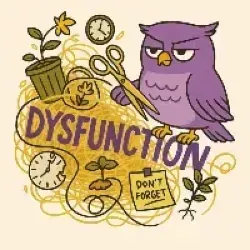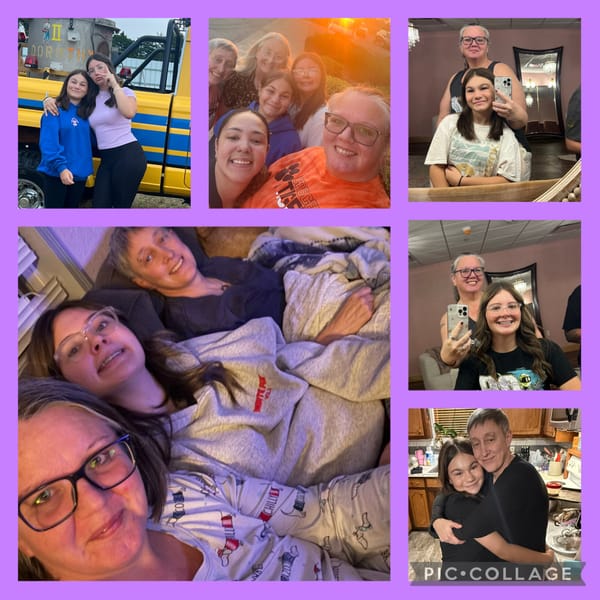Breaking the Cycle: Starting Conversations on Mental Illness to Rebuild Trust and Overcome Dysfunction

Let’s be real—mental illness has spent way too long hiding in the back corner like the awkward cousin no one talks about at family gatherings. But guess what? The silence isn’t helping anyone. If we want to break the cycles of dysfunction—in our families, our friendships, our communities—it starts with talking about the hard stuff. Yep, the messy, uncomfortable, totally-human stuff.
This article isn’t here to sugarcoat it or toss around inspirational fluff. We’re diving headfirst into the awkward art of starting real conversations about mental health—the kind that build trust, dismantle stigma, and help people stop pretending they’re fine when they’re barely holding it together. Whether you’re struggling yourself or trying to support someone else, these strategies are all about choosing honesty, leading with empathy, and rebuilding connection one brave, messy, healing conversation at a time. Because vulnerability isn’t weakness—it’s the starting line of strength.
Brains Be Wildin’: Understanding Mental Illness Without Losing Yours
Mental illness isn’t just one thing—it’s a chaotic buffet of mood swings, intrusive thoughts, and brain chemistry doing its own interpretive dance. It can range from mildly annoying to full-blown “I just cried over a sandwich” levels of intense. We’re talking anxiety, depression, bipolar disorder, ADHD, eating disorders, and more. Symptoms can include anything from constant worry to zoning out mid-conversation like your brain’s buffering. And no, it’s not a vibe or a personality quirk—it’s an actual medical thing. I personally got the deluxe sampler: a splash of generational trauma, a dash of chronic stress, and a nice scoop of “please don’t ask me to make one more decision today.” Mental illness is a complex cocktail, and no—it’s not served with a side of moral failure.
The truth is, mental illness doesn’t mean you’re broken or dramatic—it means your brain is doing the absolute most, and sometimes it needs help untangling the wires. Education is key: the more we learn, the less weird we act when someone says, “Hey, I’m struggling.” Support doesn’t mean fixing anyone—it means listening without making it about you, offering real encouragement, and not flinching when things get a little messy. Let people be weird, be real, and most of all—be heard. Because honestly? Sometimes all someone needs is a “Same, girl” and a snack.
The Importance of Open Conversations About Mental Health
Supporting someone with mental illness is kind of like being emotional support in human form—you’re not there to fix things, but to show up with empathy, patience, snacks, and maybe a list of therapists on standby. One of the best things you can do? Learn what they’re actually dealing with. Read up on the symptoms, treatments, and potential landmines so you’re not just nodding along pretending you understand when they say, “I’m spiraling.” Mental health recovery isn’t a smooth path—it’s more like a hike through emotional quicksand with the occasional detour into an existential crisis. Your role is to walk beside them, not lead the way with a flashlight and a five-point plan.
Encouraging professional help is key—and yeah, it can be awkward. Gently nudge, offer to help find someone, and if they’re hesitant, remind them that seeing a therapist is not a sign of weakness; it’s literally superhero stuff. Be there in practical ways too—help with errands, tag along to appointments, or just exist as a calm presence when they’re falling apart. And please, don’t forget to take care of your own brain while you’re supporting theirs. You can’t help anyone if you’re burned out, fried, and stress-Googling “how to support a mentally unstable person” at 2 a.m. Helping someone through mental illness doesn’t mean losing yourself in the process—it just means being the steady human Wi-Fi signal they can connect to when things get glitchy.
Stigmas Surrounding Mental Illness and Their Impact
Let’s talk about the elephant in the room wearing a “Just Snap Out of It” t-shirt: mental illness stigma. It’s one of the biggest reasons people don’t get help—and honestly, it’s exhausting. From being labeled “crazy” or “unstable,” to being treated like you’re one awkward moment away from being exiled from the group chat, the stereotypes are not just wrong—they’re harmful. And let’s not forget the families who get side-eyed like they’re somehow to blame for someone else’s brain chemistry. (Spoiler: they’re not.)
Stigma is more than just rude comments and eye rolls—it’s a full-blown barrier to healing. People suffer in silence, skip appointments, and isolate themselves because they’re afraid of being judged or misunderstood. It’s like being stuck in a shame-loop with no exit ramp. The worst part? The more we hide it, the stronger the stigma gets. So it’s time to drag this outdated nonsense into the light, wave our weird flags high, and start some real mental health conversations.
I grew up in the golden age of “we don’t talk about that”—you know, where emotions were tucked under the rug next to Grandma’s plastic-covered furniture. Heaven forbid you say the words depression or anxiety out loud. People might think you’re broken, or worse, dramatic. But let’s be real—that says more about their comfort levels than your reality.
Stigma’s had the mic long enough. Time to snatch it back and rewrite the script—with honesty, awkward honesty, and a little humor. Because nothing dismantles judgment faster than a personal story told with guts and a dash of “I’ve been there too.” Let’s turn vulnerability into a rally cry and build a world where being too much is just right.
How to Initiate Conversations on Mental Health
Initiating conversations on mental health can be challenging, but it is a crucial step in breaking the cycle of silence and stigma. Start by choosing an appropriate time and place for the conversation. A private, comfortable setting can help the person feel safe and more willing to open up. Begin the conversation with empathy and understanding, expressing your concern and willingness to listen without judgment.
Ask the kind of questions that actually open doors, not shut them. Stuff like, “How have you been feeling lately?” or “What’s been on your mind?” gives people space to share—without feeling like they’re being grilled. The goal isn’t to fix them (you’re not tech support); it’s to listen like you mean it. So zip the advice unless they ask, don’t interrupt, and just be there. Sometimes the best support is simply saying, “Yeah, that sounds really hard,” and meaning it.
If you’re cool with it, sharing your own mental health experiences can go a long way. A little “hey, me too” can make someone feel way less alone in their mess. Just make sure you’re not accidentally turning their support moment into your one-person TED Talk. The goal is to hold space, not hijack it. Come in with compassion, keep it real, and stay open—because honest conversations like these are how we start tearing down the walls around mental health, brick by awkward brick.
Vulnerability Isn’t a Weakness—It’s a Superpower (With Side Effects)
Trust is the glue that holds any meaningful relationship together—especially when it comes to mental health. It starts with vulnerability and honesty. When someone feels safe enough to drop the mask and be real, it opens the door for genuine connection and mutual support. Sharing your own struggles (even the cringy, uncomfortable ones) can make others feel less alone and more willing to open up themselves.
But vulnerability isn’t a free-for-all—it comes with responsibility. Being honest means owning your truth without sugarcoating or turning it into a therapy session for two. It also means respecting the other person’s boundaries and keeping what they share private unless they say otherwise. When we lead with openness, keep things real, and protect each other’s trust, we help create a space where mental health conversations aren’t just safe—they’re healing.
Active Listening, Deep Feels, and Why Small Talk Makes Me Twitch
Active listening is basically the superhero move of mental health discussions. It’s not just nodding while mentally assembling your grocery list—it’s actually tuning in like you’re watching a plot twist unfold on your favorite drama. Real active listening means you’re not just hearing words; you’re catching the vibe, the sighs, the “I’m fine” that clearly means I’m absolutely not fine. You’re watching their face, tone, and body language like you’re decoding a secret message—and guess what? That kind of focus tells people, “Hey, I care about your well-being more than I care about my phone right now.”
Want to get better at it? Step one: put the phone down and pretend you’re not secretly a squirrel in a human costume. Eye contact is your friend. Nods, “mm-hmms,” and a well-timed “that sucks” go a long way. Reflecting back what someone says helps too—try, “So it sounds like work is swallowing your soul… did I get that right?” Empathy is the real MVP here. You don’t need a PhD in feelings—just try to imagine how they’re feeling and respond with compassion, not a solution-fest. The goal isn’t to fix—it’s to listen like you mean it. Do that, and you’ll help build a supportive environment where people actually feel heard, not just “talked at.”
And let me just say—I personally can’t stand small talk. It’s like emotional elevator music: bland, repetitive, and makes me want to fake a phone call. “How’s the weather?” I don’t know, Chad, emotionally stormy? Ask me the real stuff. Like, “What’s been keeping you up at night?” or “When’s the last time you ugly cried in your car?” That’s my jam. Surface-level chit-chat makes me feel like I’m glitching socially. But deep, honest, mental health conversations? That’s where the real connection (and healing) happens.
Strategies for Supporting Those with Mental Illness
Supporting someone with mental illness is a delicate dance of empathy, patience, and the occasional “Google-is-my-therapist” research session. One of the best things you can do is learn about what they’re going through. Know the symptoms, the ups and downs, the weird side effects, and all the fun that comes with it (read: not that fun). Mental illness isn’t a straight line—it’s more like an emotional roller coaster that doesn’t always give you a seatbelt. Your job isn’t to “fix” it; it’s to buckle up and say, “I’m here, even if this ride gets bumpy.”
Encouraging them to seek professional help is huge—and sometimes intimidating. Be the friend who sends them therapist links and reminds them that asking for help isn’t weak, it’s badass. Offer practical help too—like rides to appointments or just showing up with tacos when life feels like too much. And while you’re supporting them, don’t forget you exist too. Check your own mental health, set boundaries, and don’t be afraid to reach out if you’re running on empty. Because let’s be real—no one can pour from an empty cup, especially when that cup has anxiety, depression, and maybe a little trauma with a twist.
Final thought: Supporting someone’s mental health is like being emotional backup—just without the matching uniforms or dramatic music.
If We Can Talk About HOA Drama, We Can Talk About Mental Health
Let’s be honest—starting conversations about mental health in our communities can feel like trying to explain Wi-Fi to a potato. There are cultural stigmas, misinformation, and a serious lack of resources that make people shut down faster than a boomer when you mention therapy. But that doesn’t mean it’s hopeless. It just means we’ve got some work to do—and we need to come at it from all angles. Enter: education, advocacy, and a whole lot of community engagement. We’re talking mental health programs in schools, workplaces, and community centers where people can actually learn what’s going on in their brains without feeling like they’re about to be judged by a PTA mom named Carol.
Advocacy is where the magic happens—getting loud about the need for policy change, funding mental health services like they actually matter (because they do), and pushing for spaces that are safe and inclusive. We need leaders—teachers, pastors, coaches, baristas with therapy podcasts—to step up and say, “Hey, it’s okay to not be okay.” Hosting workshops, support groups, or even casual community meetups can open the floodgates for real, honest conversations. The more we talk about mental health like it’s just part of being human (and not some shameful secret), the more we normalize it. And who knows? Maybe we’ll create a world where asking for help isn’t seen as weak—but as strong, smart, and totally badass.
Resources for Mental Health Advocacy and Support
You don’t have to be a therapist or have a degree in brain chemistry to support mental health—there are a ton of resources out there to help you learn, grow, and show up for yourself or someone else. National organizations like NAMI (National Alliance on Mental Illness) and Mental Health America (MHA) are basically the MVPs of mental health support. They’ve got everything from educational materials and support groups to advocacy tools and treatment directories. Whether you’re trying to understand your own mental health better or support someone you love, they’ve got you covered. Oh—and yes, they also point you to crisis hotlines and actual professionals if things get heavy.
Don’t sleep on local support either. Many communities have mental health clinics, peer-led support groups, or grassroots advocacy orgs that can offer personalized help (aka people who actually know where you are and what resources are nearby). Even workplaces and schools are getting in on the game with employee assistance programs and counseling services—so check if you’ve got access to those.
And let’s not forget the internet, where you can learn a lot and cry at a meme, all in one scroll. Sites like SAMHSA (Substance Abuse and Mental Health Services Administration) and the ADAA (Anxiety and Depression Association of America) offer self-help tools, educational content, and searchable directories to find mental health pros in your area. Social media might be a mess sometimes, but it also hosts a ton of supportive online communities and forums where people get real about their experiences. Whether you’re looking to advocate, educate yourself, or just not feel so alone, these resources can help you show up—and that’s what it’s all about.
Talk, Trust, Repeat: The Real Way to Break the Cycle
Creating a culture that actually supports mental health isn’t a one-person job—it’s a team sport. It takes a whole lot of collective effort, open conversations, and the courage to say, “Hey, maybe we don’t need to pretend we’re fine all the time.” When we lead with empathy, bust myths instead of people, and make space for messy, honest truth-telling, we give others permission to show up exactly as they are—no filters, no shame.
Supporting mental health means doing the things that actually matter: being real, listening like you mean it, showing up with snacks and support. It means getting communities involved, pushing for education and resources, and refusing to let stigma be louder than our stories. The more we speak up, the more we normalize what should’ve been normal all along. So let’s break the silence, challenge the crap out of the status quo, and start rebuilding trust—one beautifully awkward, honest, healing conversation at a time.
Healing Isn’t Linear, and Neither Was I
Let’s be real—creating a culture that supports mental health isn’t about having it all together. If it were, I would’ve been benched by life a long time ago. I didn’t even pretend to have my act together until I was 38. Before that? I was bouncing from house to house, roommate to roommate, dragging my kids through the “choose your own adventure” version of stability. Jobs? Changed them like hairstyles. Every time things got boring or repetitive (read: unfulfilling), I was out. It took me a while to realize the problem wasn’t always the job—it was me, chasing purpose in places that didn’t feed my soul.
I didn’t really start growing up until I got married—and no, not because I suddenly gained magical adulting powers. It’s because she loved me through the chaos. She stood by me while I unraveled all the junk I thought I had to hide, and helped me rebuild without asking me to be perfect. That kind of steady, fierce love? It made me believe I was worth growing up for. So if you’re still figuring things out (at 28, 38, 58—whatever), you’re not behind. You’re human.
Creating safe spaces for mental health starts right here—with vulnerability, messy truth-telling, and conversations that don’t flinch. So let’s normalize the hard talks. Let’s make it okay to say, “I’m not okay.” Because the more we open up, the more we break the silence—and trust me, what’s on the other side is worth it.
Quote Box:
“I didn’t grow up until I was loved in the chaos—and if I can start over at 38, you can start wherever you are.”
By: Jess E



